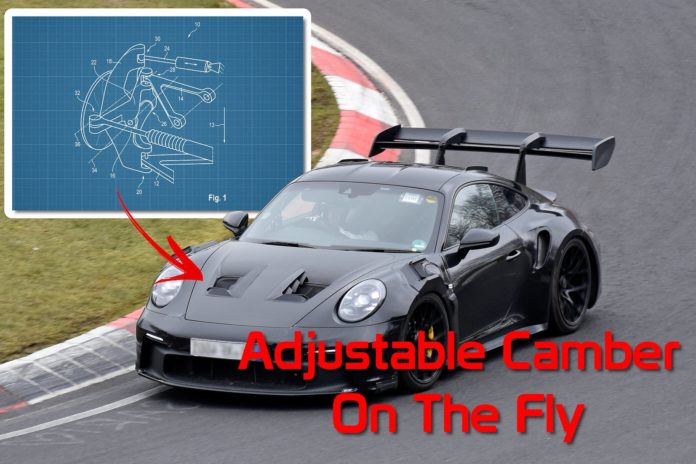Porsche specifically notes that camber adjustment can lead to unwanted toe angles, which can negatively impact steering ability. The patent discusses how longitudinal forces – such as those experienced during acceleration and braking – can be transmitted via the steering lever to the top tie rod (in a double-wishbone setup). This impacts toe and camber in very minute ways, but if a car’s suspension can counteract these forces to maintain a certain camber or toe value, more grip should theoretically be possible, the car will handle better, and lap times will fall.
It’s a genius solution for extracting more performance, but it’s not altogether new. Science journals and other patents have discussed this with a view to racing applications, so we suspect that weight, complexity, or cost could have rendered it unviable. If that’s true, why is Porsche protecting the innovation?

